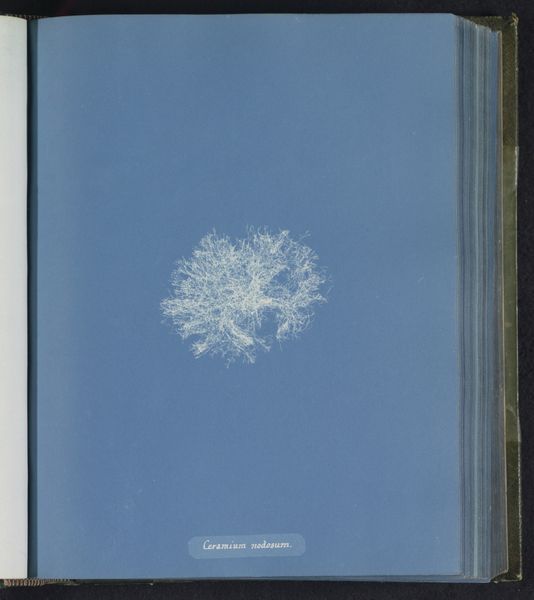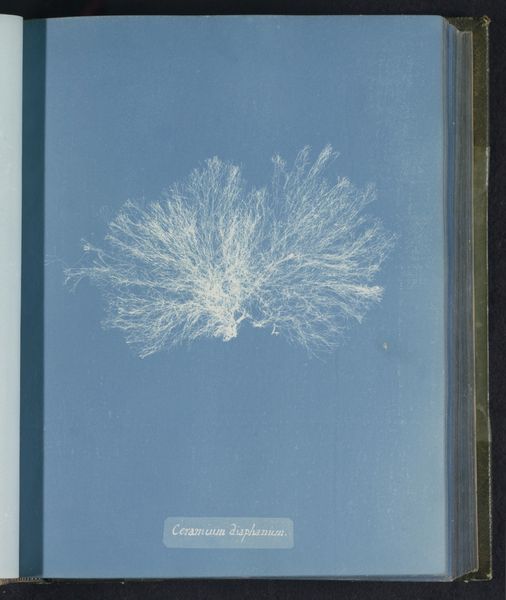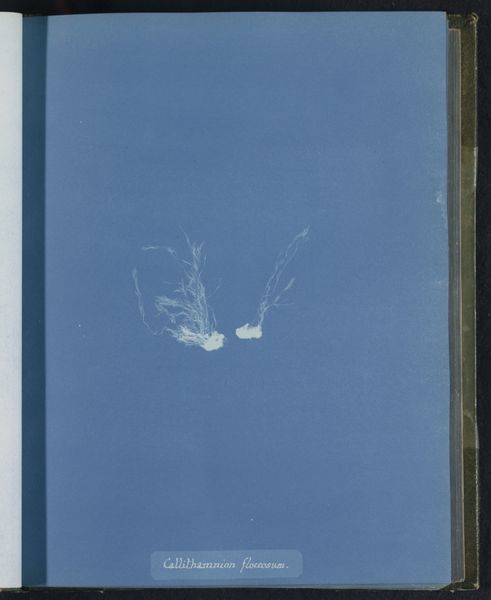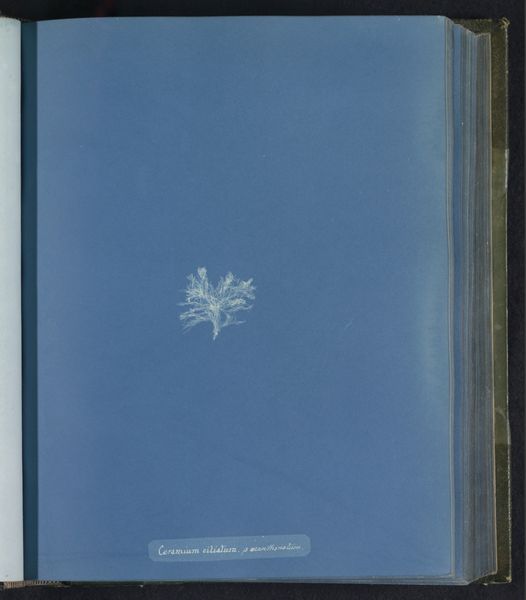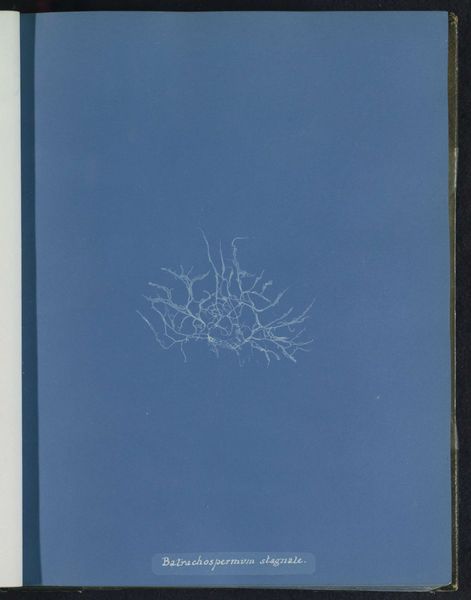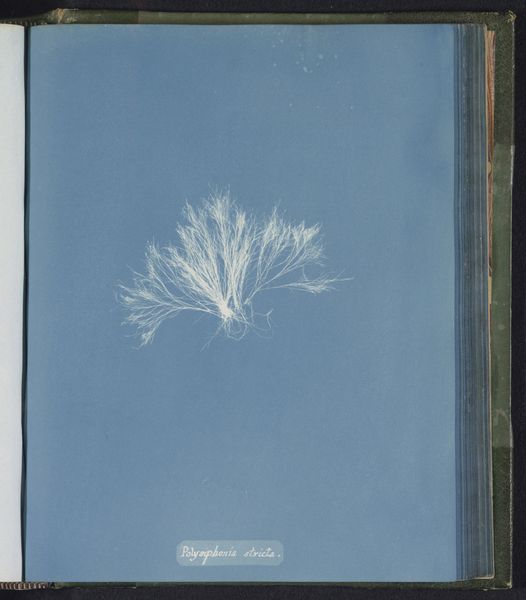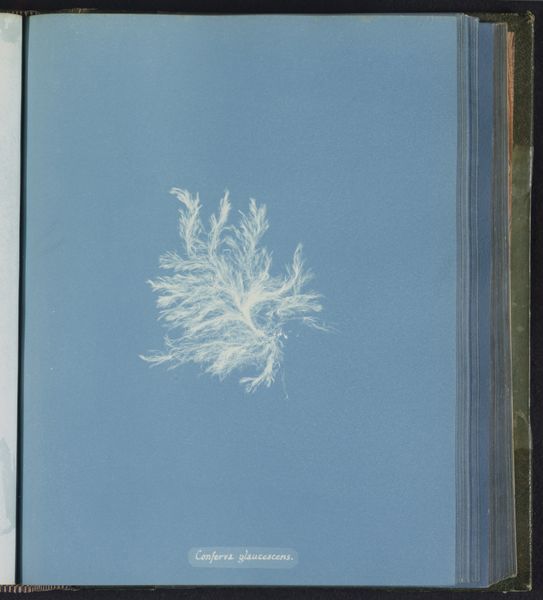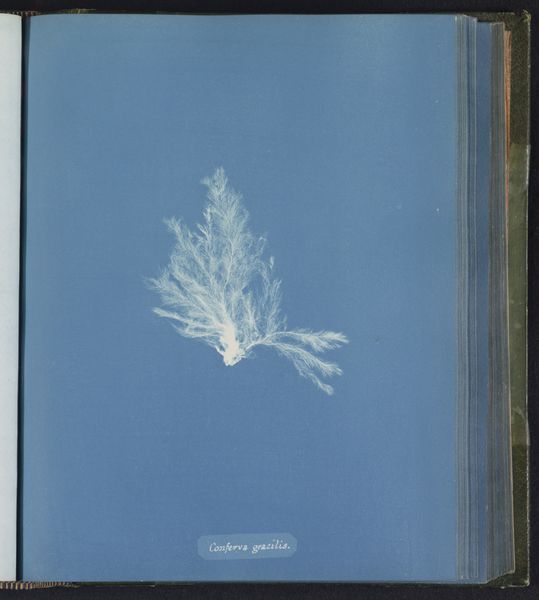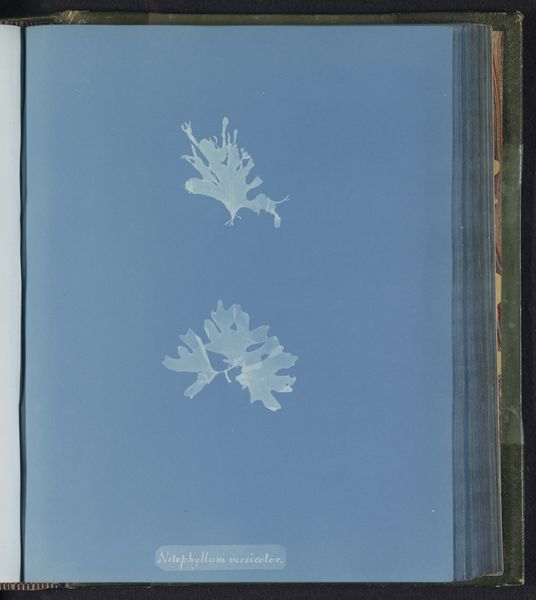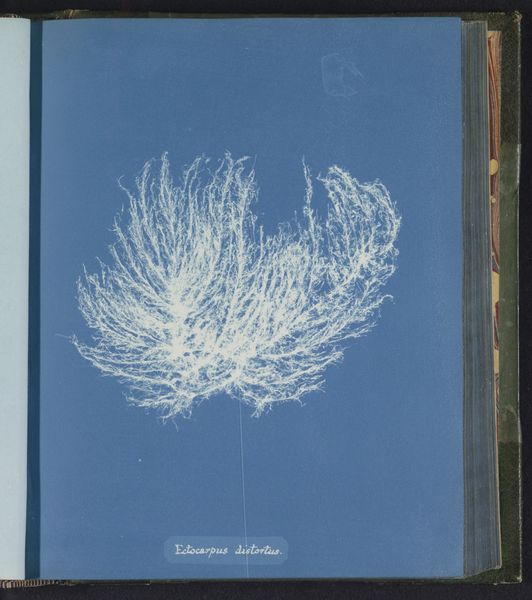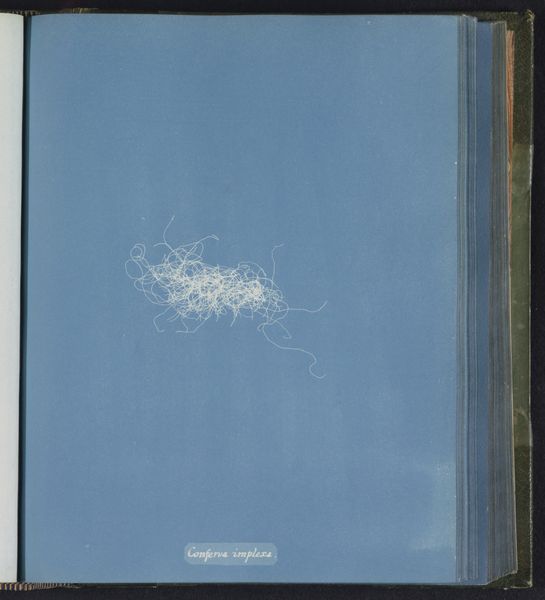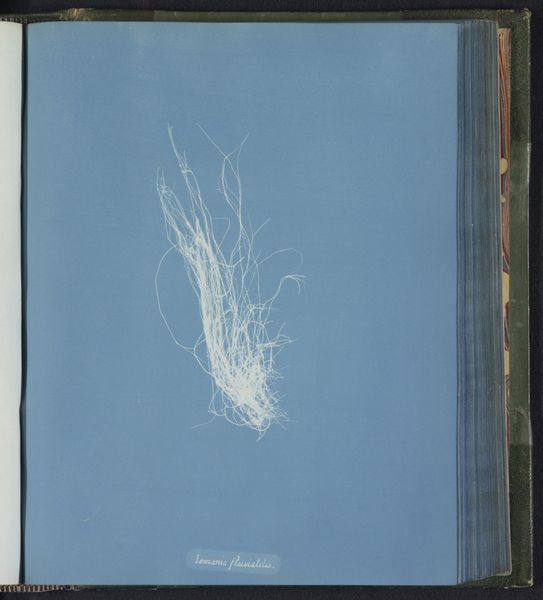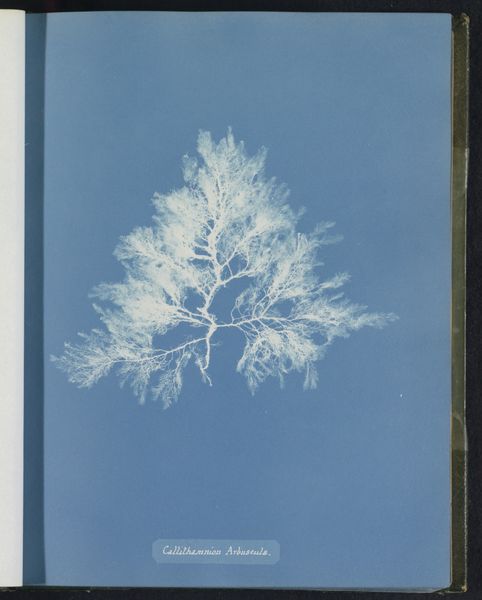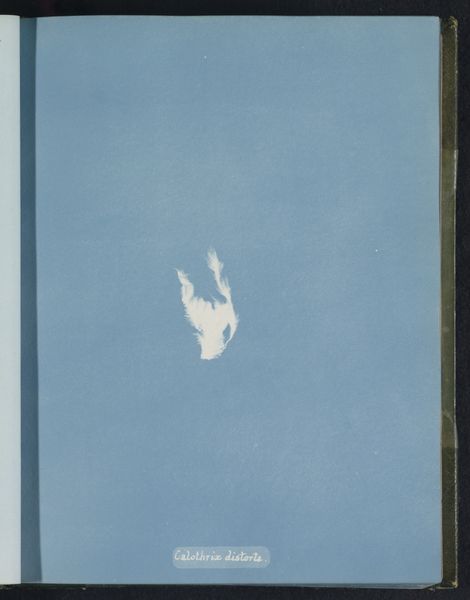
print, cyanotype, photography
# print
#
cyanotype
#
photography
#
realism
Dimensions: height 250 mm, width 200 mm
Copyright: Rijks Museum: Open Domain
This photogram, "Callithamnion brachiatum," was made by Anna Atkins in England, sometime in the mid-19th century. It’s part of a series of cyanotypes she created to document British algae. Atkins, a botanist herself, was working at a time when photography was brand new. The photogram process allowed for the direct imprinting of objects onto light-sensitive paper, bypassing the need for traditional drawing or engraving in scientific illustration. It's fascinating to consider this work in the context of Victorian England, where scientific exploration and documentation were rapidly expanding. Institutions like Kew Gardens were amassing vast collections of botanical specimens, reflecting Britain's global reach. Atkins' work, however, exists in an unusual space between art and science. Her cyanotypes are not just records of algae; they are also strikingly beautiful images. Delving into the history of scientific illustration and the role of women in science during this period really enriches our understanding of this work. It shows us how art and science were, and still are, deeply intertwined.
Comments
No comments
Be the first to comment and join the conversation on the ultimate creative platform.
